The Museum of Jewish Civilization is a teaching museum that aims to educate public audiences about Jewish history and culture. The museum, which includes the William Singer Gallery, collaborates with the Maurice Greenberg Center for Judaic Studies at the University of Hartford to offer related coursework and public programs.
To learn more about the Museum of Jewish Civilization and its director, Amy Weiss, an assistant professor of Judaic Studies and History, listen to an episode of Connecticut Public Radio's "Where We Live."
Visiting the Museum
The Museum is located inside the Mortensen Library in the Harry Jack Gray Center on the University of Hartford campus and is handicapped accessible. Directions to the main campus.
To the museum from the University of Hartford main entrance (traffic light):
Take your first left. At the stop sign, take a right and follow the campus road. At the stop sign, take a right and park in K-Visitor Lot. Walk to Harry Jack Gray Center, the "U" shaped building on the left; number 15 on campus map.
Please call 860.768.5729 or email mgcjs@hartford.edu.
Monday: 9 a.m.–3 p.m.
Tuesday: 1–3 p.m.
Wednesday: 1:30–7:30 p.m.
Thursday: 12:45–2 p.m. and 4–6 p.m.
Friday: Closed
Our Exhibitions

Jews in Space: Members of the Tribe in Orbit
On display from September 2024 – May 2025
From as early as Genesis, Jews have pondered the heavens above earth, as well as their own place within the solar system. Often borrowing from other cultures, they used astrology to help guide them in their daily lives. Jews often attempted to unite science with Jewish tradition as science and technology progressed over the centuries. Astronomy, mathematics, and other sciences appeared frequently in books published by rabbis and scholars in Hebrew and other languages during the seventeenth through nineteenth centuries.
By the early 20th century, when science and tradition had already separated, Jewish inventor Hugo Gernsback coined the term “science fiction,” and founded a series of magazines that became the home for a new genre of space literature that would come to inspire generations of readers. Later that century, Jewish astronauts and cosmonauts would be launched into orbit as part of the space program of both the United States and the Soviet Union, which also utilized the work of Jewish scientists and engineers, among many others, to reach these milestones. And finally, Jews have sometimes appeared in popular culture renditions of space travel and science fiction, starring in groundbreaking television shows such as Star Trek and beloved movies such as Spaceballs by Mel Brooks.
This is an exhibition created by the Center for Jewish History & the YIVO Institute for Jewish Research.
“Jews in Space” has received generous funding from CT Humanities.
Upcoming Greenberg Center and Museum Events
Online Exhibits

Hartford Remembers the Holocaust
“Hartford Remembers the Holocaust” introduces visitors to the history of the Holocaust through the experiences of Holocaust survivors who settled in the greater Hartford area and rebuilt their lives in the United States after the trauma of World War II. Through their lives and their memories, visitors can learn the importance of preserving the past to build a better future. They can also explore the role everyone can play in building a society dedicated to mutual understanding and respect that celebrates diversity and cares for others.
Online visitors can watch first-hand stories of survival and learn what happens when prejudice and discrimination are allowed to multiply without the intervention of responsible individuals and governments. Through the testimonies of survivors, as well as the stories of their children and grandchildren, online visitors can learn about the lasting impact of the Holocaust.
Learn more about and listen to the holocaust survivors
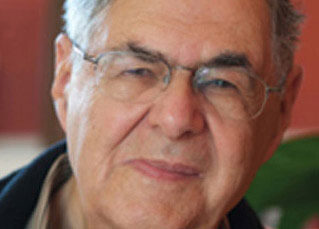
Leon Chameides was born on June 24, 1935 in Katowice, Poland where his father, Kalman Chameides, served as chief rabbi. With the German invasion of Poland, Leon’s family fled eastward, joining the migration of 250,000 Jews. With the Soviet occupation of eastern Poland, the family first settled in Szczerzec, with Kalman’s parents, near Soviet-occupied Lwów, Poland (present-day L'viv, Ukraine).
When the Germans invaded in June 1941, the family remained in Szcerzec, but Leon’s father was appointed to the Religious Affairs department of the Jewish Council in the Lwów ghetto. In August 1942, Leon’s father met with the Metropolitan Andrei Sheptytski (1865-1944), the head of the Uniate Church in Ukraine, as part of an effort to hide several hundred Torah scrolls saved by the community in Lwow. In the course of the meeting, Sheptytski agreed to shelter Leon and his brother, Herbert, under the protection of the church.
In late 1942, Leon (age 7) and Herbert (age 9), were transferred from Szczerzec to two separate monasteries run by the Uniate Church in Western Ukraine where they were given new identities, taught to speak Ukrainian and instructed in prayers and rituals so they could pass as Christian children. Leon ended up spending two years in hiding, living in an orphanage in Briukhovychi, Ukraine, before moving to Univ, where he was sheltered with two other Jewish boys and protected by Brother Danil Temchyna (later recognized as a Righteous Gentile by Yad Vashem).
Leon’s father died of typhus on December 25, 1942; his mother perished in 1943, following the liquidation of the Lwow ghetto in April 1943. Leon and his brother were liberated by Soviet forces in the summer of 1944; Leon tried to return to Lwów only to have the Russian soldiers send him back to Univ. He finally returned to Lwów, where he reunited with his brother; there they discovered that their parents and grandparents perished during the war.
Leon and Herbert immigrated to England in 1946 to live with his maternal grandparents (the Konigshofers). He immigrated to the United States in 1949, entering medical school in the first class at Albert Einstein College of Medicine. In 1967, he moved to Hartford, and served as the founding Chair of Pediatric Cardiology at Hartford Hospital and Connecticut Children’s Medical Center for 30 years, as Chair of Pediatrics at Hartford Hospital for 10 years, and as Clinical Professor of Pediatrics at the University of Connecticut School of Medicine.
He and his wife Jean have three children and seven grandchildren. He is known as the father of “pediatric resuscitation” a technique he developed in the field and has also become a dedicated Holocaust educator, authoring the book Strangers in Many Lands: The Story of a Jewish Family in Turbulent Times and most recently On the Edge of the Abyss: A Polish Rabbi Speaks to His Community on the Eve of the Shoah, a translation of his father’s sermons and essays as Rabbi of Katowice.
Watch Leon tell his story below.
My Father Saved Me
Little Boys to Great Men
My Brother and I Were Separated
Teaching Priests about Their Religion
Reading My Father's Essays
There are Good People
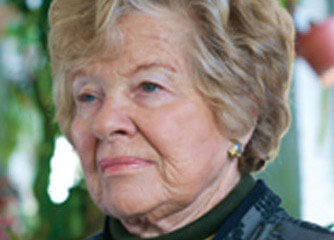
Ruth (Lichtenstern) Fishman was born in Cologne, Germany, on July 17, 1936, but moved with her family to Amsterdam soon afterwards. Under the German occupation, her family was concentrated into the “Amsterdam East” ghetto. Originally her family was able to escape the roundups to deport Jews to concentration camps because of her father’s work in the metal industry, but eventually in 1943 they responded to a summons and were moved to a theatre in Amsterdam filled with many other Jews. They were all transported to the Westerbork Concentration Camp, a transit camp for Jews to eventually be deported to their deaths in occupied Poland.
In September 1944, Ruth and her family were transported via cattle car to Theresienstadt, a concentration camp in Czechoslovakia near Prague. For eight months, Ruth and her family were subject to the worsening conditions of Theresienstadt. In late October 1944, her maternal grandparents, Flora and Louis Spier, were deported from Theresienstadt to Auschwitz, where they were murdered. The camp was liberated by Soviet troops on May 9, 1945. After six weeks of traveling from the Czech Republic to Amsterdam, Ruth’s family discovered they had lost their home.
During the Korean War, Heinz Lichtenstern decided to move the family and his metal business to Brazil, fearing the outbreak of another world war. Ruth attended an American school in Brazil and was able to move to the United States when she was 18. Ruth now lives in West Hartford, Connecticut, and has three children and seven grandchildren.
Watch Ruth tell her story below.
A Little Girl's Memories
Dad Tricked the Nazis
This is Your Doll
In Cattle Cars
Father Called to Auschwitz
Liberated by the Russians
The World Hasn't Learned Yet
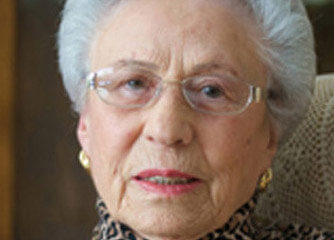
Margot Jeremias (nee Gunther) was born in Heidelberg, Germany on February 10, 1926. She grew up in a small village near Heidelberg named Hoffenheim, where her parents owned a dry-goods business. After Hitler and the Nazis came to power, Margot began to experience discrimination; the other children bullied her and soon she was no longer allowed to attend German schools. In 1938, her sister, Inge (aged 17) moved to the United States but Margot and her family stayed in Hoffenheim.
On November 9-10, 1938, Kristallnacht, her father was arrested and imprisoned in Dachau for 5 weeks along with the adult Jewish males of Hoffenheim. On October 22, 1940, Margot (age 14) and her parents were deported to the Gurs internment camp in Vichy, France. She lived in a children’s camp for six months, then transferred to Rivesaltes on April 20, 1941 before she was taken to a French Jewish scouts camp (Eclaireurs Israelites Francais). Her parents were sent to Drancy (near Paris) in August 1942 and then deported to Auschwitz where they were likely murdered on arrival.
With the help of the French Underground (and two women code-named Sultane and Chevre-Feuille) Margot was sheltered for a year at Riscle convent using a false identity and then worked as a maid for a non-Jewish family (Malan) in Brives until the war ended. After the liberation of France (in fall 1944), Margot returned to a children’s home in Moissac operated by the OSE, where she spent two years before finally managing to reunite with her sister in New York City. Margot married a German Jew (Martin Jeremias) who had served in the intelligence service with the U.S. Army in WWII. They raised their family in New York City, two daughters, seven grandchildren, 18 great grandchildren (and counting) and as Margot says, “all from little old me.”
Watch Margot tell her story below.
Friends Would Not Speak to Me
Fear Never Left Me
Deported to Internment Camps
Going into Hiding
Placed in a Convent
What Happened to My Parents
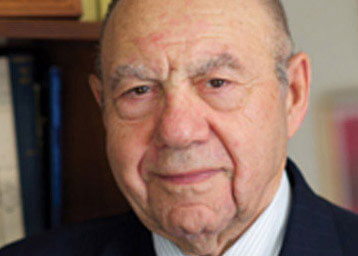
Philip Lazowski was born in the small town of Bielica (present-day Belarus) in 1930, the son of Chaya Gitel and Josef Lazowski, and older brother of Rachmil, Abraham, Aaron, and Rachel. His father was a fisherman and his mother owned a fabric store. At the beginning of WWII, their part of Poland was occupied by the Soviet Union and they lived under Communist Russian rule until 1941.
With the German invasion of the Soviet Union in June 1941, German forces marched into Bielica on June 28, 1941 and began to slaughter the Jewish population in a mass killing operation. On November 10, 1941, the remaining Jews of Bielica, including Philip and his family were banished to the Zhetel ghetto. On April 29, 1942, the Germans carried out a round-up in the Zhetel ghetto, driving Jews from their homes to the central marketplace. Philip’s family managed to hide in a cave under their home, but Philip was caught by a German soldier before he could hide and forced to the market place where a selection was underway. He was saved from the selection thanks to the intervention of a kind-hearted woman, named Miriam Rabinowitz, who pretended Philip was her son to protect him from the round-up.
After surviving the first selection, Philip, reconnected with his family and introduced his mother to the kind lady who saved his life. The second liquidation began on August 6, 1942, and after five days hiding in the cave again, Philip, his mother, and siblings were caught and forced into the Kino movie theater in the town. Philip’s mother pushed him from the second story of the movie theater, encouraging him to flee to the nearby forest where his father and a brother were in hiding. That was the last time he saw his mother or three youngest siblings. A short time later they were among several hundred Jews forced into trucks by Nazi soldiers. When Philip’s mother pushed him from a second-floor window of the Kino, she told him “I want you to live. My son, may God show you the way. The world will someday need you.” Philip, 12 years old at the time, escaped death that day and managed to reconnect with his father and younger brother, Rachmil; they would go on to live in the woods for two years with others trying to survive the Third Reich’s attempt to liquidate the Jews.
After the war Philip, his father Josef, and younger brother Rachmil (Robert) made their way to a displaced persons camp in Austria. In 1947 they traveled by train from Bad Gastein through Germany to Bremen where they boarded a ship for the trip to the United States. He continued his education in New York City graduating from Yeshiva University. At a wedding in New York he met a young woman who told him about a family in Hartford that had once saved a “boy from Bielica” in the Zhetel ghetto. Knowing that he was that boy, Philip called the Rabinowitz family, eventually traveling to Hartford where he was reunited with Miriam who saved his life in the first selection in the Zhetel ghetto.
He began dating her oldest daughter Ruth and they were married in 1955. He was ordained in 1962 and earned his doctorate in Jewish Studies eight years later. Brought to Hartford as Education Director for Beth Sholom Synagogue, Rabbi Lazowski became its rabbi several years later. When Beth Sholom later merged with Beth Hillel in 1969, he remained as rabbi for the following 40 years. Rabbi Lazowski is the author of several books including, Faith and Destiny, an autobiographical account of his Holocaust experience. He has been active in the Jewish and non-Jewish communities. He has served as a Hartford Police Chaplain, a member of the Board of Commissions on Aging, and was a past president of both the Educators' Council of Connecticut and the Jewish Education Council of Hartford. He is a member of the Rabbinical Assembly of Connecticut and serves as Rabbi Emeritus of The Emanuel Synagogue.
Watch Rabbi Lazowski and his wife Ruth tell their story below.
Our Childhood
Taken from Our Homes
Hiding and Meeting as Children
I Want You to Live
In the Woods
I Once Saved a Boy
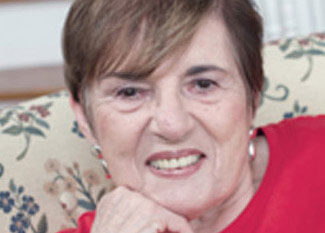
Ruth Lazowski (nee Rabinowitz) was born in 1935 in the town of Dyatlova (or Zhetel in Yiddish) in present-day Belarus. Ruth (whose birth name was Rokhl) was the older daughter of Miriam and Moshe (Morris) Rabinowitz, and the older sister of Tanya (now Toby). Ruth’s mother was a pharmacist and had a drug store in the middle of town; her father was in the lumber business and knew many peasants in the countryside. At the time, the town was part of Poland; as part of the Molotov-Ribbentrop Pact, the town became part of the Soviet Union from 1939-1941. Under the Russian occupation, Miriam’s drugstore and Moshe’s lumber business were nationalized by the communist government and the family moved to nearby Novogrudek to live with other family members.
After the German invasion of the Soviet Union, Zhetel and Novogrudek were occupied by the Germans and a ghetto was established there in 1942. When the Germans invaded the Soviet Union, Novogrudek was bombed and much of the town was destroyed. The Rabinowitz family decided to move back to Zhetel to be closer to Ruth’s grandfather, Berl. With the establishment of the ghetto in Zhetel, Berl became one of the first members of the Jewish council (Judenrat) but was soon murdered. During the round-up on April 30, 1942, Ruth and her mother and sister were separated from her father during the selection but Ruth’s mother managed to survive because she possessed papers as a pharmacist and skilled laborer. It was during this selection that Ruth’s mother also managed to save the life of young Philip Lazowski, who had been separated from his own family. Miriam Rabinowitz pretended Philip was her son and he was spared the fate of those sent “to the left” and death.
The second massacre started on August 6, 1942, and lasted for three days as many Jews hid in prepared bunkers. During the course of the clearance of the ghetto some 2-3,000 Jews were shot in three mass graves, in the Jewish cemetery on the southern outskirts of Zhetel, roughly 1,000 people in each. Just over 200 Jewish craftsmen were transferred to the ghetto in Nowogródek. This was the end of the ghetto and the end of the Jewish community of Zhetel. Several hundred Jews including Ruth and the Rabinowitz family, who had hidden, fled once the massacre was over, some forming a family camp in the Nakryshki forest, where they managed to survive for the next two years until their liberation by Red Army troops.
After the war, they remained in Poland for about six months, first traveling to Lublin, before crossing the alps and journeying towards Italy. There they lived in a Displaced Persons camp in Santa Maria d’Leuca and in a villa in Rome before leaving for the United States. The family settled in Hartford, CT; Ruth and Philip were married at Beth David Synagogue in December 1955. Ruth became a dedicated Jewish educator in Hartford and Bloomfield; Rabbi and Ruth Lazowski have three sons and daughters-in-law, as well as seven grandchildren.
Watch Ruth and her husband Rabbi Philip Lazowski tell their story below.
Our Childhood
Taken from Our Homes
Hiding and Meeting as Children
I Want You to Live
In the Woods
I Once Saved a Boy
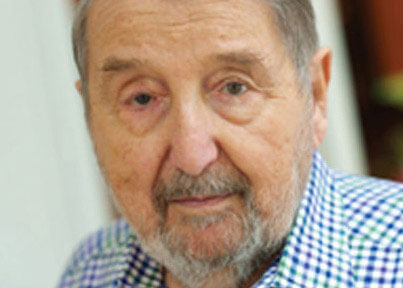
Abraham "Abby" Weiner, was born December 22, 1929, the only son of Chaim and Gisela “Gitel” (Lebowicz) Weiner, from Sziget (Sighet), Transylvania, Romania. His father, a veteran of the First World War, worked in leather and sold to area peasants and maintained a small tannery in the home; Gitel was a housewife. Chaim was from Sziget, Gitel was from a small town near Borszav. They lived on the main street in Sziget, which fell under Hungarian rule in 1939.
In April, 1944, after the Germans took over in Hungary and installed a friendly Hungarian regime, the residents of Sziget were interned in a large ghetto that held approximately 11,000 people. One month later, beginning on May 17, 1944, the Hungarians pushed the people of Sziget onto a series of transports – the Weiners were on the final transport of May 21 together with the family of Elie Wiesel–which took them to Auschwitz-Birkenau. After three days, the transport arrived in the middle of the night at Birkenau, where all were driven off the transport by SS men with guns and dogs, entering a new and unknown world. Abby was separated from his mother whom he would never see again, but was with his father as they were inducted into Birkenau.
After a few days, they were moved to Auschwitz I where they were tattooed, and where many Sziget men and boys were standing together in a group. Abby Weiner and his father were A7705-7706; Elie Wiesel was A7713. Abby was separated from his father and sent to the Jawiszowice subcamp, while his father was sent with the others from Sziget to Auschwitz III-Monowitz, or Buna. In Jawiszowice, Abby was put to work for seven months sorting rocks from coal on a conveyer belt and also pushing carts connected with the coal mining operation.
When Jawiszowice was evacuated, Abby Weiner was on a death march, walking with a group and also occasionally surreptitiously riding hidden on a sled that other boys pulled, and then they were in an open car transport that came ultimately to Buchenwald, arriving January 22, 1945. At Buchenwald, Abby Weiner was registered as prisoner #117207 at Buchenwald, but then was prisoner #120342. He recalls being placed in quarantine in a large wooden barrack in the kleines lager (little camp) and then being moved to block 8, the children’s block, in the grosse lager (main camp). Abby recalls even before being put in block 8 encountering his father Chaim in Buchenwald.
Chaim arrived on the open car transport from Buna, which arrived January 26, 1945–this is also the transport that carried Elie Wiesel to Buchenwald. Chaim Weiner was on it; so was Abby’s friend Armin Rosenberg from Sziget who encountered Abby in the little camp and informed him his father was there. Chaim was in a weakened state and Abby conspired to see him four times that week. They spent time together, several days, but then his father, who was beaten for his food in the barracks, expired, and the last time Abby came to see him he was gone. Abby recalls looking at the pile of dead bodies outside the barrack unable to find his father.
Abby stayed in block 8 during the final chaotic days of the camp, which was liberated by American troops on April 11, 1945. After liberation, Abby remained inside the grosse lager; while many of the Buchenwald boys, including Elie Wiesel and Armin Rosenberg later went to France for rehabilitation in group homes run by the OSE, Abby left Buchenwald early and went with Otto Exinger to his home in Wurzberg. Otto Exinger took him to Frankfurt, and there, he was reunited with Idy and George Weiner, his father’s brother’s children, who were from Kisvarda and Budapest. Ultimately, an American officer from Brooklyn, Harry Silver, who later married Idy, got them a house and he stayed there. He also got Abby illegally to England, flying him into England dressed in an American uniform.
In England, Abby studied to be a tool and die maker and went to London where he lived in a group hostel. He was part of the 1945 Aid Society, hooking up with some of the boys who had come to England from Buchenwald and Theresienstadt after liberation. Later, he came to New York to an uncle in Brooklyn and subsequently he lived in the Bronx. He worked in textiles on the Lower East Side, was drafted into the army in Korea, became a citizen, went to display school on the G.I. Bill®, later met Bonnie, a Brooklyn girl, and lived in the Bronx and in Westchester. He and Bonnie had two children–Howard and Gayle, as well as four grandchildren.
Watch Abby tell his story below.
What's Going to Happen to Us?
No Words to Describe What I Saw
See That Smoke There
My Number was A7705
The Last 4 Days with My Father
Smuggled into England
Lessons for Future Generations
Connecticut Remembers the Holocaust
The goal of Connecticut Remembers the Holocaust is for students to hear the voices of survivors of the Holocaust, learn their stories, and then use that information to remember and more easily empathize and act on behalf of people whose identity makes them vulnerable today and in the future. Visit ctremembers.org to learn more about the survivors who made Connecticut their home in the aftermath of the war.
Portraits of Survival by Lena Stein
This online exhibit features photographs by Lena Stein and is dedicated to her father Abram Stein, a Holocaust survivor. Born in Brzesc Kujawski, Poland in 1922, Abram Stein lived with his family in the city of Wloclawek. During World War II, Stein, along with his parents Pesa and Fajwel, and his siblings Jakob, Fela, and David, escaped to Russia and lived in Chelyabinsk. The family returned to Poland. Yet, Lena’s grandfather’s 11 siblings did not survive.
Lena notes: “As I was taking photographs of Holocaust survivors from the Hartford area, I felt it was a privilege to meet them and hear their life stories. I wish had more time to spend with every one of them. I also felt that it was not the portrait, but their story that was more important. I would like to thank all the Holocaust survivors that I met for the time that they gave to me.”
See the portraits and read about the holocaust survivors
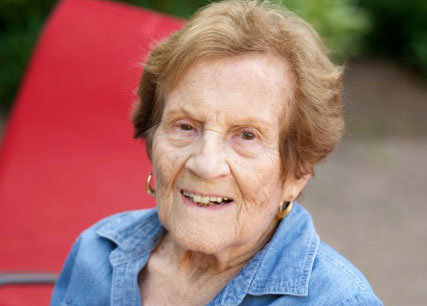
Gisela Adamski was born in January 1928 in Oppeln, Germany. While young Gisela was growing up, she experienced rampant anti-semitism, as she was constantly teased by others because of her Jewish identity. Due to her Jewish upbringing, Gisela was expelled from her private, all-girls school, and was subsequently removed from her public school. By 1937, Gisela’s status as a Jew made it impossible for her to walk in the park, or watch a movie in the theater. The growing anti-Semitism Gisela experienced in Germany peaked on April 19, 1943, when she and her family were deported to the Theresienstadt concentration camp.
Upon arrival, Gisela’s father was mercilessly beaten, and her mother experienced a stroke. Instead of being placed in the children’s area, Gisela insisted she stay with her father and remained in the same building with him. While imprisoned in the camp, Gisela had many different jobs, and eventually was able to locate her mother in the hospital. Upon discovering her whereabouts, Gisela took her mother and cared for her until she was deported to Auschwitz in October of 1944. Not wanting to be separated from her mother, Gisela begged a German soldier to let her go alongside her mother. Although the soldier warned her that she was foolish for wanting to go, he nevertheless let her board the cattle car. Gisela stayed in Auschwitz for a total of six days. On the sixth day, she was sent to Kurzbach labor camp, where she remained for three and a half months. Toward the end of the war, Gisela was sent on a horrific “death march.” While on the march, a Polish man told her and another girl nearby to hide in a bunch of hay. When the two girls covered themselves up in the hay, they discovered that they were hiding with 43 other girls. The Polish man saved a total of 45 girls while on the death march. While in hiding, these young girls broke into people’s homes for food and clothes, until one night, a Russian soldier entered their makeshift home and raped seven of them, including Gisela. After that event, the girls knew they had to leave and sought shelter in a nearby hospital.
Gisela worked at the hospital until the end of the war. While working there, she befriended a Jewish Russian soldier, and the two of them went home in search for their families. On their journey home, the two women met a Jewish soldier, whom Gisela later married. Gisela and her husband stayed in Poland for 10 months, but were then forced to leave because of the ensuing pogroms. The two of them moved to France, and later to Israel. After ten long years of waiting, Gisela and her husband were eventually able to come to the United States on May 26,1956. After immigrating to America, Gisela and her husband raised their family in Queens, until they moved to Connecticut in 2010.
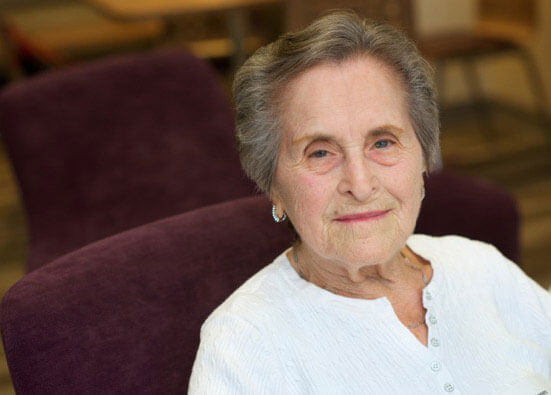
Edith Denes was born in 1930 in Munkacs, Hungary, a place where there were many religious Jewish families. There, Edith had a wonderful life. She lived with her mother, father, and older sister. She was a quiet girl and liked to study and read, but what Edith loved the most was that she always had family surrounding her since she lived on the same street or the next street over from her grandparents, aunts, uncles and lots and lots of cousins. As a girl, Edith loved playing with her little cousins, and would frequently babysit for them. Edith’s father would take her to school in a horse-drawn carriage, or in a horse-pulled sled in the snow, every day on his way to work. She celebrated all the Jewish holidays, and every week on Friday night she went to visit family to wish them a Shabbat Shalom. Edith recalls that it truly was a wonderful life.
At 14 years old, in 1944, her whole world changed. All the Jewish people were taken to a ghetto, and about a month later Edith and her family were on a train to Auschwitz, enduring the worst cruelty mankind could inflict on another human being. But, they considered themselves the “lucky” ones. While Edith’s mother, father, and sister all survived, her grandparents, most of her aunts and uncles, and all the little cousins perished. Edith and her family were liberated in 1945, but others had taken away their home. With nowhere to go, they were sent to a Displaced Persons camp in Germany, where they remained for 3 years. Edith deeply missed her extended family but was thankful to God that her mother, father, and sister had survived.
During her stay at the DP camp, Edith was unable to return to school. She had no access to books, and deeply missed learning, reading, and studying. When she was 18 years old, Edith met a strong, wonderful, and kind man, who she married inside the camp. Her husband had survived but the rest of his family, including his parents, his two younger brothers and his extended family did not.
Edith and her husband immigrated to Israel in 1948 and fought in the Haganah, helping to found the state. The couple made a good life together. Every day, Edith remembers, was a challenge, but as survivors, they worked extremely hard to make it happen, and now have a wonderful family to show for it. Their first son was born in Israel when she was 19; then the family immigrated to Canada where they had a daughter. Following this, the family moved to the U.S. and had a second son. At age 48, Edith had her first grandchild, and now has nine others, including two great-grandchildren by the age of 82.
Although Edith had four years of horrific experiences, she was never filled with hate or bitterness, only sadness for what was lost. She thanks God for her survival, and she always says that “if there is life there is hope.” Edith removes the memories of the Holocaust from her mind and replaces them with hard work and days spent with her family, especially during celebrations. Edith believes that she still possesses the same qualities she had when she was a young girl. She loves to read, study, and go to synagogue, and although she did not play sports in Munkacs, she now exercises three times per week. Edith now lives in Connecticut with her family, and despite the tragic passing of her husband two years ago, she thanks God that she is 88 and alive to tell her story.
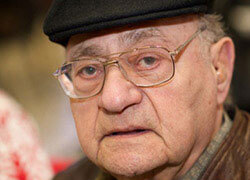
Robert Lesser was born on May 13, 1933, in the small Polish town of Bielica. Robert’s father was employed as a fisherman, while his mother owned a clothing store. He spent much of his childhood with his grandfather, who not only taught him his trade, dying sheep wool but also taught him the principles of morality and ethical human conduct. He continuously reminded Robert of the importance of always being kind, because he believed that everyone was created equally by God. Before the war, Robert spent his childhood playing with children of all different faiths. He and his friends would run around his grandfather’s house or go fishing together. This carefree lifestyle came to a halt in 1941, when Robert was just eight years old when the German army invaded his town.
Upon their arrival to Bielica, the Germans sought to burn all Jewish homes, synagogues, mikvahs, and Jewish schools. Every Jewish home was burnt to the ground, with the exception of Robert’s grandfather’s residence. All Jewish citizens were then ordered to leave, so Robert and his family (including his brother, Philip Lazowski) went to Zhetel, where they were immediately put into a ghetto upon their arrival to the region. Life in the ghetto was horrendous. Robert and his family spent their time there in deep hiding alongside 23 to 24 people with no water, no food, and no bathroom. While in hiding, Robert’s grandfather got a loud and horrendous cough, so out of fear of getting caught, and securing her son’s life, Robert’s mother pushed him out of the basement and told him to run. Robert had nowhere to hide, and nowhere left to run. Outside of the basement, Robert spotted an outhouse and jumped in, where he remained concealed until it was safe for him to leave. Once outside of the ghetto, Robert discovered a farmer who had a relationship with his beloved grandfather. As a result, the farmer took Robert in and told him to run to the forest. While attempting to escape, Robert accidentally entered a slave camp and was put to work building railroads. While at the camp, Robert’s uncle found him and managed to smuggle him into the enclosure of the forest.
Robert hid here until he was 11 years old. At this young age, Robert was enlisted into the Russian Military as a Lieutenant. Following his service in the military in 1947, Robert immigrated to the United States, a journey which would last 31 days. Robert was so relieved to finally be in American territory, that he kissed the soil once he discharged from the boat. Robert made a life for himself in the United States and married his wife Margaret in October of 1955. Together, Robert and Margaret have three children and six grandchildren.
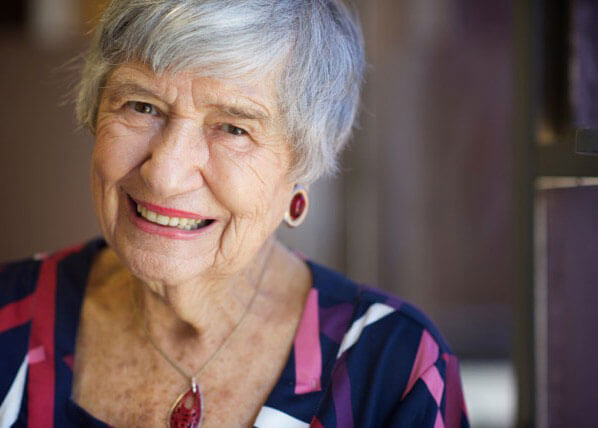
Trudy Lovell, born as Traute Hirschmann, was born in Breslau, Germany, in 1920, to her parents Arthur and Mary. Trudy’s father was employed as an agent for an insurance company, while her mother stayed at home to raise their only child. Trudy’s parents understood the importance of a solid education for their daughter, and as a result, Trudy spent four years in grammar school, and seven more in primary school. Trudy dreamed of becoming a doctor and studied hard to achieve her dream. This was the case until she turned 16 years old, and was tragically thrown out of her school because of her identity as a Jewish girl. Trudy’s dreams of studying medicine were shattered in 1936, and everything began to worsen for her and her family.
Trudy was taken away and spent the years of the World War II at a number of different labor camps, and eventually ended up imprisoned at Buchenwald. Despite working long, tireless hours, those in the camp were only allowed to eat once or on rare occasions, twice per day. This meal consisted of a single bowl of cold soup. If Trudy, and her fellow inmates, did not work fast or hard enough, they would be assaulted and yelled at by German soldiers. Luckily, Trudy was fortunate enough to also experience the good in people during her experience surviving the war. Before she was sent away, she and her family lived near a church. In this facility, the parish’s minister offered to save Trudy and her family if they converted to Christianity. A farmer also offered to hide Trudy for her parents, and her neighbors tried to protect her father when the Gestapo sent him to Buchenwald. Despite the kindness Trudy received, she nevertheless spent the war going from labor camp to labor camp.
Trudy was liberated in January 1945 by the Russian army from Sachsenhausen (after going to multiple prison locations) and was subsequently taken in by a Polish officer. He fed her and managed to reunite her with her parents. In fact, the two of them fell in love, but Trudy could no longer live in Poland because of the antisemitism she still faced there. As a result, Trudy and her family moved to a displaced person’s camps in Germany, where she then met her current husband. Trudy, her husband, and her parents, eventually arrived in the United States, where they moved to Hartford, Connecticut. Trudy worked at Macy’s, while her husband worked at the Whitney Air Company. Trudy and her husband were unable to have children, and though they tried to adopt for many years, it, unfortunately, fell through. Trudy’s husband passed away 25 years ago on the night of the Passover Seder, but her legacy lives on through her many grandnieces.
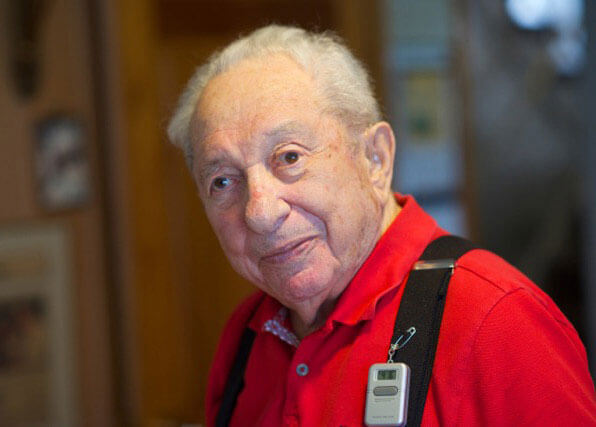
Roman Luftglass was born in Silesia, Poland in 1925, but he grew up in Szczakowa, Poland (located between Krakow and Katowice). Even before the rise of German power, the young Roman, and his family faced anti-semitism on a day-to-day basis. Unfortunately, nothing could brace the family for the horrific life they would live after 1939: the year Germany invaded Poland. Following 1939, new laws were set in place, and Roman and his family were sent to live in a Jewish ghetto. From there, they were deported to Auschwitz.
When the family arrived at Auschwitz, they were met by the SS doctor. The doctor directed people either to the left, where they were met with a horrific death in gas chambers, or the right, an indication that the prisoners would be sent to work at the camp. Roman was sent to the right. However, the rest of his family suffered a more tragic fate, and were sent to the left, and consequently, to their deaths. Roman was put to work at the chemical camp, engaged in labor. Due to his excellent work ethic, Roman was transferred to the main shop. While working in the main shop, Roman noticed that the welding woman would always toss away pieces of paper into the area’s garbage. Out of curiosity, he reached into the garbage one day to find scraps of bread hidden inside of the paper. After discovering the bread, Roman would wait every day for the woman to throw away her secret paper and would take it to the nearby bathroom to eat the bread that was held inside. Roman was soon caught sneaking the woman’s food. Since he did not want to expose her he refused to tell the guards where he got the bread pieces. Roman’s consequence for this action was getting his fingers slammed into a door. Later, Roman was also caught stealing food from the kitchen, for which he was lashed 25 times until he fell unconscious.
On May 8, 1945, Roman was liberated by the Russians from the Sportschule Reichenbach (also known as the Langenbielau Labor Camp in Lower Silesia). Following liberation, Roman tried to return to his hometown in order to resume his life, but was only met by hostility from his former best friend’s mother. Roman then made his way to Munich, where he received help from the United Nations Relief and Rehabilitation Administration (UNRRA) initially finding work as a mechanic. He then worked as a film projectionist, working on behalf of the AJDC in postwar Germany. He remained in Munich until he was provided a sponsor in Columbia, South Carolina, which allowed him to immigrate to the United States. While in the United States, Roman worked as a mechanic and was later drafted into the U.S. Army. Roman then moved to Hartford, Connecticut, where he met his wife. He passed away in August 2017.
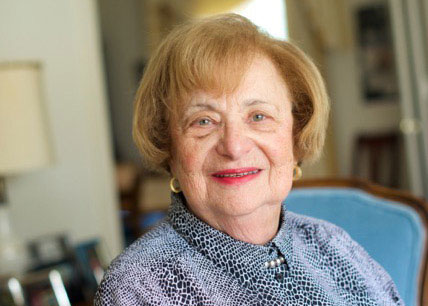
Florence Post was born to a middle-class family in Kovno, Lithuania, in 1936. Before the war, Florence’s mother was a dentist, and her father was an accountant. In Kovno, Florence and her family lived a comfortable lifestyle until it was suddenly disrupted after Russia invaded their country in June 1940. At this time, members of Florence’s family were scattered throughout Europe after the invasion. Her grandmother and three uncles were deported to Siberia, while those aunts and uncles who remained in Lithuania were killed by Nazi collaborators.
In 1941, thousands of Jews were taken to the 7th fort near Kovno where they were murdered by German Einsatzgruppe detachments and Lithuanian auxiliaries. Only 20 people survived the mass killing. One of those 20, was Florence’s father, who was able to survive by bribing the shooter. Following the mass shooting, Florence’s family was sent to the Kovno ghetto. Florence felt trapped during her time in the ghetto. She was enclosed by a barbed wire fence and forced to live with more than 30,000 other Jews crowded into the ghetto. While living in the ghetto, Florence’s mother sensed even more danger was to come, so she decided to escape the ghetto and find protection for her children. As a result, Florence’s mother was sent to a farming family who was able to take in Florence and her cousin Lana. The farmers, Mr. and Mrs. Lapinskus, took in Florence and Lana in 1944, where they stayed until the end of the war. Florence’s brother was also sent into hiding, but he was taken in by a family who lived in the city.
After the war, Florence’s mother spent weeks waiting to hear from her estranged husband. After months of no mail, Florence’s mother found a letter stating that her husband was alive and living in Lodz, Poland. It was difficult for Florence and her family to travel to her father, because of the Iron Curtain, but with the help of the Lapinskus family, Florence reconnected with her father. The family moved to Czechoslovakia, and later to Germany. In 1949, her family was lucky enough to get accepted to come to the United States. Florence’s family was sponsored by their relatives from Waterbury, Connecticut. It was a difficult transition for Florence. She found it very difficult to learn English, and her parents struggled to make a living here.
Florence eventually got her master’s in education from the University of Hartford, where she taught for five years. She later married her husband, Phil Post, and the two of them created a wonderful family composed of three kids and seven grandchildren. Florence Post passed away in November 2017.
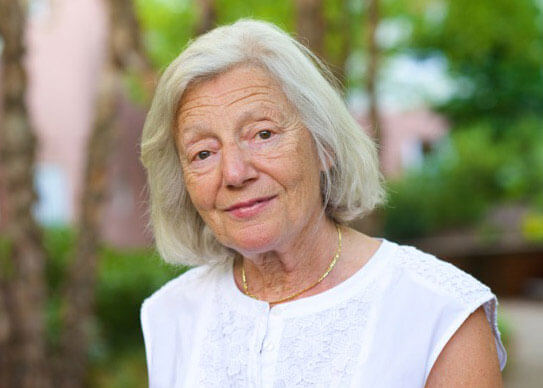
Charlotte Schiff was born in Fulda, Germany, in the year 1937 to a set of very caring and loving parents. Although Charlotte was an only child, she grew up in a full household with her parents and both sets of grandparents. Charlotte’s family was financially well off. However, they were ostracized by their community because they were Jewish. Prior to the war, her town forced all Jewish residents to wear arm bands which marked them as members of the Jewish community. Jews were restricted from going into the park or entering certain stores. Due to the treatment, Charlotte’s family received while in Fulda, they promptly moved to Frankfurt when Charlotte was just three years old.
Once Charlotte’s family arrived in Frankfurt, it appeared that life would not be better for them. Upon arrival, Charlotte’s family was taken by cattle car to Theresienstadt, where one grandparent died in transit, and another died at the entrance to the camp. Charlotte faced death many times while in Theresienstadt, but she miraculously survived. During the early 1940s, on a cold autumn night, Charlotte recalls being rounded up with others and taken outside to be killed. She does not know why, but the executing soldier did not kill anyone that night, sparing Charlotte’s young life. At the age of 5, Charlotte was forced to hide in an attic in order to secure her own life. She was bundled together with a number of other children, all of whom were dying, but once again, Charlotte survived.
A 8 years old, Charlotte and her parents were finally liberated from Theresienstadt. She could not read nor write, but her parents were able to relocate her because of her concentration camp card. Following the war, Charlotte and her family lived in a hospital wing in Frankfurt, Germany, but they soon moved to Koeppern, Germany, to reside in yet another hospital wing created specifically for the treatment of Holocaust survivors. Charlotte and her parents later moved back to Frankfurt to live in an elderly home. She eventually came to the United States at age 19 after she was rejected from nursing school because of her religion. Charlotte left everything behind in Germany, including her dear parents. Of course, she severely missed her family. However, Charlotte believed she had no future in the country she once called home. At age 20, Charlotte married her husband of 48 years, and moved to Connecticut with him, where she still resides today.
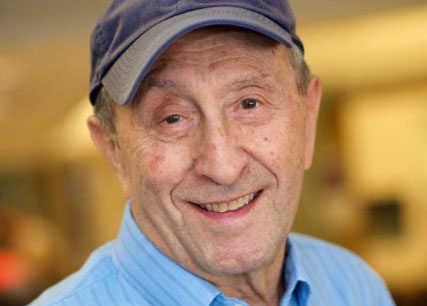
Martin Schulz was born on September 30, 1927, in Moschitz, Poland, to his parents Pinkus and Leah. Martin’s father worked as a merchant, and his mother tended to the family garden. Before the war, Martin spent his days attending school and visiting his aunt in Lwow with his siblings and mother. Martin and his family lived a comfortable life until the summer of 1941 when the German army invaded the eastern section of the Soviet Union.
Martin’s mother and brother were then taken from their home by the Germans, while Martin and his sister desperately attempted to escape by hiding in a nearby farm. When Martin and his sister came out of hiding, they had no alternative but to return to their home. Once they arrived, the siblings were met by their distant cousin, who told them their house was surrounded by soldiers, and that the two of them needed to run. As a result, Martin and his sister ran to Lwow to join their aunt. However, they forgot the location of her home. Before the two could find refuge, Martin was swarmed by German soldiers and herded onto a train to be sent to a labor camp in Metz, Germany. Upon arrival, Martin was told to strip and was checked for various diseases. He was then put to work in a steel factory. Martin stayed in the labor camp for approximately five months. At the camp, there was no food, with the exception of highly watered down soup. However, laborers were required to walk to and from their positions each day. Martin was later sent to a farm, where he worked until the end of the war. While at the farm, Martin worked with another man who was not Jewish. Martin was terrified of giving away his secret Jewish identity, so he would bless himself in front of others before meals and attend Church with his co-worker and boss. Throughout his farm experience, Martin had no choice but to pretend that he was happy when in reality, he was hurting: he knew he had no family left in Lwow.
After the war, Martin attempted to find other Jewish survivors. He went to a displaced persons camp in Landsberg (near Munich), where he stayed until 1949 when he immigrated to the United States. Martin came to America with just $10 to his name. He had no family, no job and did not know English. He moved to Hartford, Connecticut, where he received help from social services and got a job in a factory. Throughout his life, Martin held many different jobs, from running his own business to becoming a jeweler. Martin married his wife, Judy, and carried on his family’s name with her, for Martin feels that it is his job to keep his family alive because no one else is left to do so. Martin now has two daughters, one son, and five grandchildren.
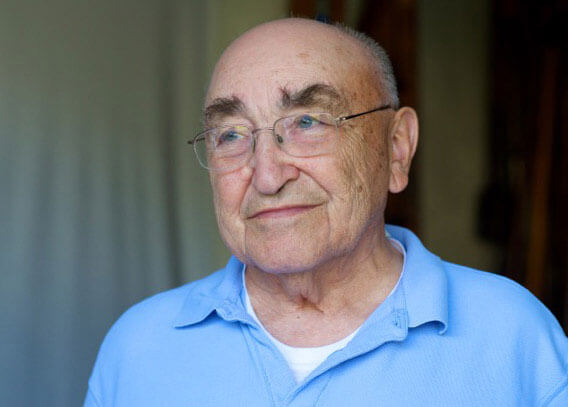
Abe Smolar was born in 1925 in the vibrant Jewish community of Vilna, Lithuania. For Abe, life in pre-war Vilna was quite comfortable. He attended school; he had friends who were both Jewish and non-Jewish, with a family who deeply loved and provided for him. Abe lived a very peaceful, prosperous life until the war engulfed his life.
Once the Second World War broke out, Abe and his family were sent to live in the Vilna Ghetto. In the ghetto, Abe’s father got a job as a wood-hauler, but in September 1943, the Vilna ghetto was liquidated. That year, cattle cars arrived at the ghetto, taking Jews away to many different concentration camps. To avoid capture, Abe and his family hid in a cellar with 300 other people, but soon they found out that the house across the street was wired with heavy explosives. Everyone who was previously in hiding was evacuated, and they were all placed aboard the cattle cars. Abe spent the war in a number of different concentration camps, including forced labor camps in Estonia, as well as the Stutthoff concentration camp. In 1943, the Soviet army almost liberated the camp Abe was in, but the Germans were able to push back their forces. After that event, all of the Jews in that facility were transferred to another camp. They were forced to make their way to the new camp on foot, and they had to pull sleds containing the belongings of the German army. Abe’s father was paralyzed, so Abe and his friends not only pulled their sleds, but also carried his father, for Abe could not bear to leave his father behind.
As the war progressed, Abe was separated from everyone in his family, including his father. Abe’s sister was shot when she refused to evacuate the camp she was in. In February 1945, Abe was forced onto a death march to Danzig, then across the Vistula to a small camp near Lauenburg, where he was finally liberated by the Russian Army. Following his liberation, Abe was drafted into the Russian army. Once the war ended, Abe returned home, but he sadly found that no one left there. He eventually married a young woman from his hometown of Vilna, and they moved to the United States
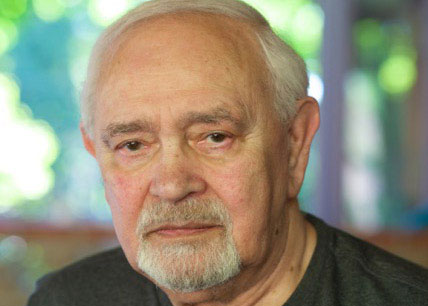
Jack Vogel was born in Lwow, Poland (present-day Ukraine) in 1925. Jack lived in Lwow for 16 years, until he was forcibly taken to Janowska labor camp following the German invasion in June 1941. While at the camp, Jack was forced to march five miles each day, while people threw objects at him and his fellow prisoners.
Jack worked tirelessly on the railroad tracks. For seven months, Jack endured life in Janowska, but he felt himself getting weaker. At this point, Jack knew he needed to escape. One day while at work, he complained about his stomach aching and was asked to leave, but instead of going home, Jack ran straight for the nearby water and hid in the reeds. After finding refuge the reeds for a few days, Jack was able to escape and make his way to the ghetto that his family was inside. While with his family, Jack felt himself gaining strength and noticed that his hair was growing out. He looked like the young Christian man who had occupied his home since his family was sent away. As a result, Jack was lucky enough to be able to use this young man’s identity.
With Jack’s new Christian identity, he was able to work in a German warehouse loading food, and his sister Emily was equally lucky, as she too was able to use a Christian identity and was hired for a job in the city. Jack and his sister’s secret was kept from the world, until letters between themselves, containing Jewish terms, were found and confiscated by the Germans. One night, when Jack was not at home, Germans came looking for him, and so he ran back to the ghetto in Lwow. Jack spent the rest of the war running and hiding from the Germans. Once the war ended, he no longer ran. Jack went to a displaced persons camp, and soon afterward, immigrated to the United States. While in the United States, he joined the military and fought in both the Japanese and Korean wars.
Past Exhibits
Past exhibits have explored the history of Jewish interactions with Muslims and Christians, the lives of Jews in several countries across time and space, and the artwork of Jewish artists including Arthur Szyk and Chaim Gross, among many other topics.